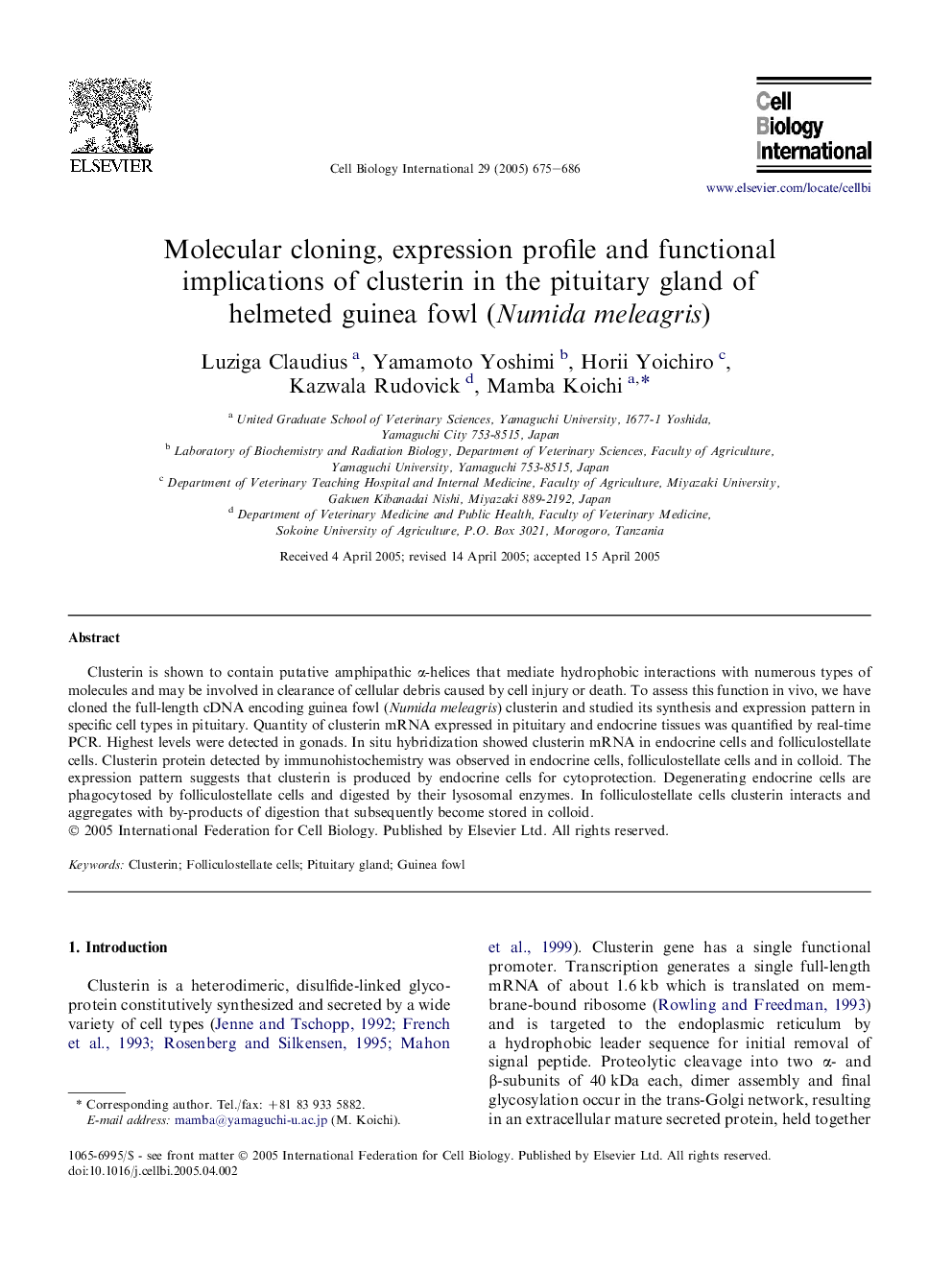| Article ID | Journal | Published Year | Pages | File Type |
|---|---|---|---|---|
| 10881808 | Cell Biology International | 2005 | 12 Pages |
Abstract
Clusterin is shown to contain putative amphipathic α-helices that mediate hydrophobic interactions with numerous types of molecules and may be involved in clearance of cellular debris caused by cell injury or death. To assess this function in vivo, we have cloned the full-length cDNA encoding guinea fowl (Numida meleagris) clusterin and studied its synthesis and expression pattern in specific cell types in pituitary. Quantity of clusterin mRNA expressed in pituitary and endocrine tissues was quantified by real-time PCR. Highest levels were detected in gonads. In situ hybridization showed clusterin mRNA in endocrine cells and folliculostellate cells. Clusterin protein detected by immunohistochemistry was observed in endocrine cells, folliculostellate cells and in colloid. The expression pattern suggests that clusterin is produced by endocrine cells for cytoprotection. Degenerating endocrine cells are phagocytosed by folliculostellate cells and digested by their lysosomal enzymes. In folliculostellate cells clusterin interacts and aggregates with by-products of digestion that subsequently become stored in colloid.
Related Topics
Life Sciences
Biochemistry, Genetics and Molecular Biology
Biophysics
Authors
Luziga Claudius, Yamamoto Yoshimi, Horii Yoichiro, Kazwala Rudovick, Mamba Koichi,
